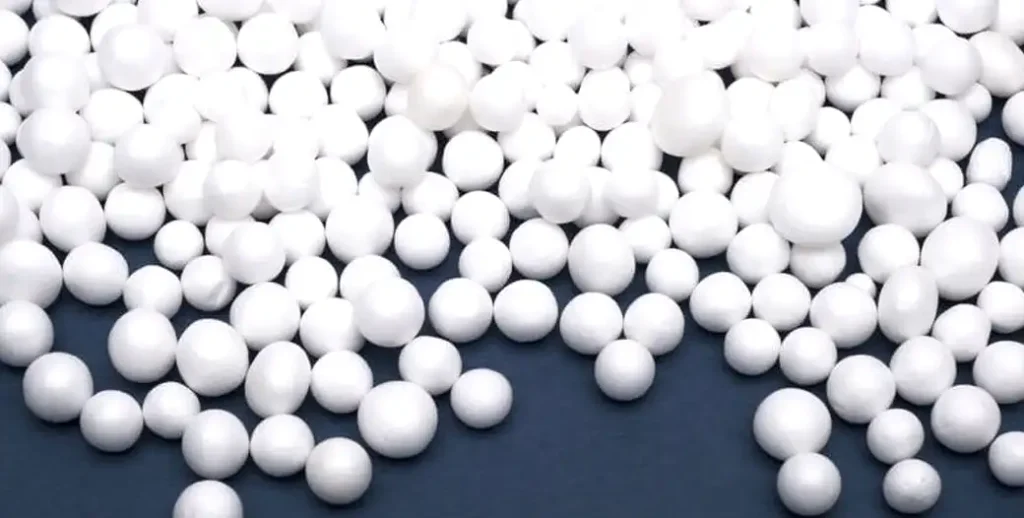Styrofoam, a lightweight and versatile material, has become a staple in many households. However, when it comes to microwaving food in Styrofoam containers, there’s a lot of debate and confusion.
In this blog post, we’ll delve into the risks associated with microwaving Styrofoam and why it’s best to avoid this practice.
What is Styrofoam?

Styrofoam, also known as polystyrene foam, is a lightweight and commonly used material in various aspects of our daily lives. It’s often seen in packaging to protect delicate items during shipping, as well as in disposable food containers and cups.
Styrofoam is the material of choice for many industries due to its light weight and good insulating properties. However, understanding the properties and potential effects of Styrofoam is essential to making informed decisions regarding its use and disposal.
Is Microwaving Styrofoam Safe?

Styrofoam: The Chemical Concerns

Short answer: No, microwaving Styrofoam is not safe.
While Styrofoam is convenient for storing and transporting food, it’s not designed to withstand the heat of a microwave. When heated, Styrofoam can release harmful chemicals into your food.
The Science Behind the Risk
Styrofoam is made from polystyrene, a type of plastic. When exposed to high temperatures, polystyrene can break down and release styrene, a volatile organic compound (VOC). Styrene is known to be toxic and can cause a variety of health problems, including:
- Respiratory issues: Styrene can irritate the lungs and airways, leading to coughing, wheezing, and difficulty breathing.
- Neurological problems: Exposure to styrene has been linked to neurological disorders, such as headaches, dizziness, and impaired cognitive function.
- Cancer risk: Some studies have suggested that long-term exposure to styrene may increase the risk of certain types of cancer.
Safer Alternatives
To avoid the risks associated with microwaving Styrofoam, consider these safer alternatives:
- Microwave-safe containers: Invest in a set of microwave-safe glass or ceramic containers. These containers are designed to withstand high temperatures and won’t release harmful chemicals into your food.
- Paper or cardboard containers: While these containers aren’t as durable as plastic or ceramic, they are generally safe to use in the microwave. However, it’s important to avoid containers with wax coatings or other additives, as these can also release harmful chemicals.
- Transferring food to a microwave-safe plate: If you’re short on time, you can transfer your food from a Styrofoam container to a microwave-safe plate. This will help to minimize your exposure to harmful chemicals.
By choosing safer alternatives, you can protect your health and the environment.
Fire Hazards of Styrofoam

Styrofoam presents a notable fire hazard aspect that cannot be ignored. Styrofoam is highly flammable, and this characteristic poses a significant threat.
When exposed to heat sources or open flames, Styrofoam can quickly catch fire and spread rapidly. The potential for a fire to start and escalate when Styrofoam is involved is a serious concern. Even a small spark or an unexpected source of heat can potentially ignite the Styrofoam, leading to a dangerous situation.
Once ignited, the fire can spread rapidly, endangering lives and property. The fumes released during a Styrofoam fire can also be harmful and pose additional risks to health. It is crucial to be vigilant and take precautions when dealing with Styrofoam in environments where there is a risk of fire. This may include proper storage and handling to minimize the chances of accidental ignition.
Additionally, being aware of potential fire hazards and taking appropriate fire safety measures, such as fire extinguishers and proper ventilation, are critical to mitigating the risks associated with polystyrene foam in the event of a fire emergency. Recognizing and addressing the fire hazards of Styrofoam is essential to ensuring safety in a variety of settings.
The Physical Effects on Styrofoam and the Microwave
Beyond the chemical and fire hazards, there are distinct physical effects when microwaving styrofoam. The intense heat generated by the microwave has the ability to physically alter the styrofoam in various ways. It can lead to the styrofoam warping, where its shape becomes distorted and no longer retains its original form. The heat can also cause the styrofoam to melt, turning it into a gooey mass that loses its structural integrity.
In some cases, it may even disintegrate completely, breaking down into small pieces. This not only destroys the styrofoam but also poses potential harm to the microwave itself. Fragments of the melted styrofoam can adhere to the inner surfaces of the microwave, having a detrimental impact on its functioning.
This can compromise its efficiency and performance, and may even lead to malfunctions or other problems in the future. It is essential to be aware of these physical consequences and avoid microwaving styrofoam to safeguard both the material and the appliance.
How to Use Styrofoam?

Here are some suggestions regarding the use of Styrofoam:
For Consumers:
1. If you receive items packaged with Styrofoam, try to keep them properly for reuse to reduce the frequency of one-time use.
2. In daily life, advocate reducing the dependence on disposable products made of Styrofoam.
For Enterprises and Manufacturers:
1. Actively explore and develop environmentally friendly materials that can replace Styrofoam for product packaging and production.
2. Optimize the production process to reduce the amount of Styrofoam used and reduce the dependence on it under the premise of ensuring product quality.
3. Consider using recycled Styrofoam materials to reduce costs and environmental impacts.
For the Society as a Whole:
1. Strengthen the publicity and education on the hazards of using Styrofoam to improve the public’s environmental awareness and understanding of its potential risks.
2. Encourage scientific research institutions to increase investment in the research of Styrofoam alternative materials and treatment technologies.
3. Promote the establishment of a more complete Styrofoam recycling and treatment system to improve the recycling rate of resources.
Conclusion
Is Microwaving Styrofoam Safe?While Styrofoam has been widely used due to its convenience and certain properties, it is crucial to be fully aware of its associated concerns. The chemical, fire hazard, and physical effects when interacting with microwaves highlight the importance of cautious use and proper handling.
It is our collective responsibility to balance the benefits of materials like Styrofoam with the need to protect ourselves and our planet.
Click on our homepage to get more information about Styrofoam.
